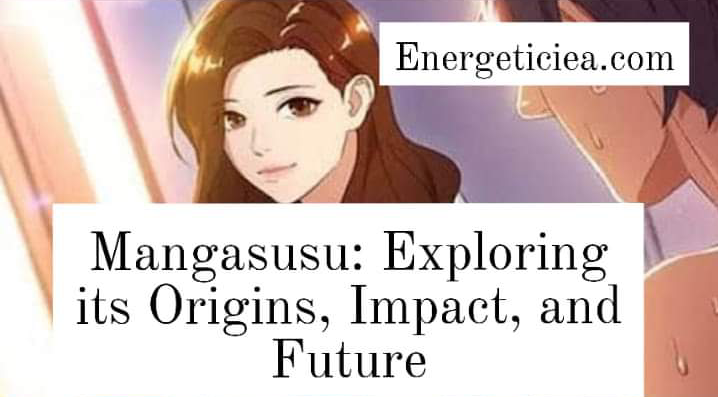Introduction
In the realm of entertainment, manga has long been revered for its captivating storytelling, intricate artwork, and diverse genres. However, within the expansive universe of manga lies a lesser-known gem known as “Mangasusu.” This article aims to delve deep into the world of Mangasusu, unraveling its origins, examining its impact, and pondering its future trajectory.
Understanding Mangasusu: Origins and Evolution
Mangasusu, derived from the Japanese words “manga” and “susu” (susu meaning “suspended” or “paused”), represents a unique sub-genre within the broader manga landscape. Its origins can be traced back to the early 21st century, with the emergence of experimental storytelling techniques and avant-garde artistic styles.
Unlike traditional manga narratives that follow a linear progression, Mangasusu employs non-linear storytelling, often incorporating surrealistic elements, dream sequences, and fragmented plotlines. This unconventional approach challenges readers to interpret the narrative in a subjective manner, inviting them to actively engage with the story’s themes and motifs.
Over the years, Mangasusu has evolved into a diverse and multifaceted genre, encompassing a wide range of themes, including existentialism, surrealism, psychological horror, and speculative fiction. Renowned manga artists such as Suehiro Maruo, Junji Ito, and Shintaro Kago have made significant contributions to the development of Mangasusu, pushing the boundaries of visual storytelling and narrative experimentation.
Exploring the Impact of Mangasusu
Mangasusu’s impact extends beyond its niche audience, influencing the broader landscape of manga and pop culture as a whole. Its innovative storytelling techniques have inspired a new generation of manga artists to explore unconventional narrative structures and thematic complexities.
Moreover, Mangasusu’s emphasis on introspection, symbolism, and psychological depth has resonated with readers worldwide, sparking discussions on existentialism, identity, and the nature of reality. Through its thought-provoking narratives and haunting imagery, Mangasusu has garnered critical acclaim and garnered a dedicated fanbase eager to unravel its enigmatic mysteries.
Furthermore, Mangasusu’s influence can be seen in other forms of media, including film, television, and literature, where artists and creators draw inspiration from its surrealistic aesthetics and narrative techniques. The genre’s ability to blur the boundaries between reality and fantasy has captivated audiences across different cultural landscapes, transcending linguistic and geographical barriers.
The Future of Mangasusu: Trends and Prospects
As we look towards the future, the landscape of Mangasusu continues to evolve, embracing new technologies and storytelling formats. With the rise of digital platforms and webcomics, aspiring artists have greater opportunities to experiment with unconventional storytelling techniques and reach a global audience.
Additionally, the growing interest in interdisciplinary collaborations and transmedia storytelling has led to exciting new ventures in the world of Mangasusu. From immersive multimedia experiences to interactive narratives, creators are pushing the boundaries of what defines manga, opening up new avenues for artistic expression and audience engagement.
However, amidst these innovations, the core essence of Mangasusu remains rooted in its ability to challenge conventions, provoke thought, and evoke emotion. As the genre continues to evolve, it is essential to preserve its spirit of experimentation and artistic integrity, ensuring that Mangasusu remains a vibrant and vital force in the world of manga for years to come.
Conclusion
In conclusion, Mangasusu stands as a testament to the boundless creativity and innovation within the world of manga. From its humble origins to its enduring impact on global culture, Mangasusu continues to captivate audiences with its surrealistic imagery, thought-provoking narratives, and avant-garde sensibilities.
As we journey further into the realm of Mangasusu, let us embrace the unknown, revel in the ambiguity, and celebrate the transformative power of storytelling. For in the suspended world of Mangasusu, the possibilities are endless, and the journey is only just beginning.
FAQs (Frequently Asked Questions)
1. What distinguishes Mangasusu from traditional manga?
Mangasusu distinguishes itself through its non-linear storytelling, surrealistic imagery, and thematic complexity. Unlike traditional manga, Mangasusu often incorporates dream sequences, fragmented plotlines, and existential themes.
2. Who are some notable artists associated with Mangasusu?
Renowned artists such as Suehiro Maruo, Junji Ito, and Shintaro Kago are often associated with Mangasusu due to their contributions to the genre’s development and popularity.
3. How has Mangasusu influenced other forms of media?
Mangasusu has influenced other forms of media, including film, television, and literature, inspiring creators to explore surrealistic aesthetics and experimental narrative techniques.
4. What is the future outlook for Mangasusu?
The future of Mangasusu looks promising, with emerging trends in digital storytelling and interdisciplinary collaborations opening up new opportunities for artistic expression and audience engagement.
5. Where can I find Mangasusu manga?
Mangasusu manga can be found in select manga stores, online retailers, and digital platforms specializing in avant-garde and experimental manga.
6. Is Mangasusu suitable for all audiences?
Due to its surrealistic imagery and thematic complexity, Mangasusu may not be suitable for all audiences. It is recommended for mature readers who appreciate experimental storytelling and avant-garde aesthetics.
7. Are there any Mangasusu anime adaptations?
While there are few anime adaptations directly labeled as Mangasusu, some anime series incorporate elements of surrealism and existentialism reminiscent of Mangasusu storytelling techniques.
8. How can I support Mangasusu artists?
You can support Mangasusu artists by purchasing their manga, attending their exhibitions, and engaging with their work on social media platforms. Additionally, spreading awareness of Mangasusu within your community can help promote appreciation for the genre.
9. What themes are commonly explored in Mangasusu?
Mangasusu often explores themes such as existentialism, identity, the nature of reality, and psychological horror. Its narratives delve into the human psyche, challenging readers to confront profound philosophical questions.
10. Can I create my own Mangasusu-inspired artwork?
Absolutely! Mangasusu encourages artistic experimentation and creative expression. Feel free to draw inspiration from the genre’s surrealistic aesthetics and narrative techniques to create your own unique artwork.







